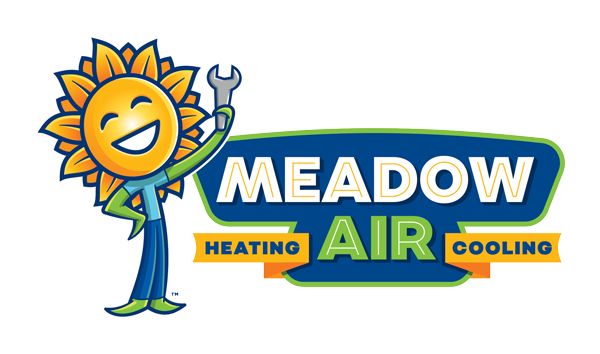Where Is My AC Filter Located and How Do I Change It?
HVAC or AC filter replacement skills are a fairly essential part of responsible air conditioner ownership, especially if you want your AC unit to have the longest possible lifespan. However, many people find that they either don’t know anything about air conditioner filter replacement or they simply don’t understand why it is necessary.
We understand this struggle, and also know that the air filter is an integral part of AC performance. Not only does it help to improve the efficiency of the aircon, but it also helps to improve air quality.
To help you master this essential skill, we’ve constructed a step-by-step guide on how to change an AC filter. This article will also share many other details that can help you understand your AC air filter and why it matters.
Why Changing Your AC Filter Is Important
There are many excellent reasons for changing your AC filter regularly, which we’ll take a look at in a moment.
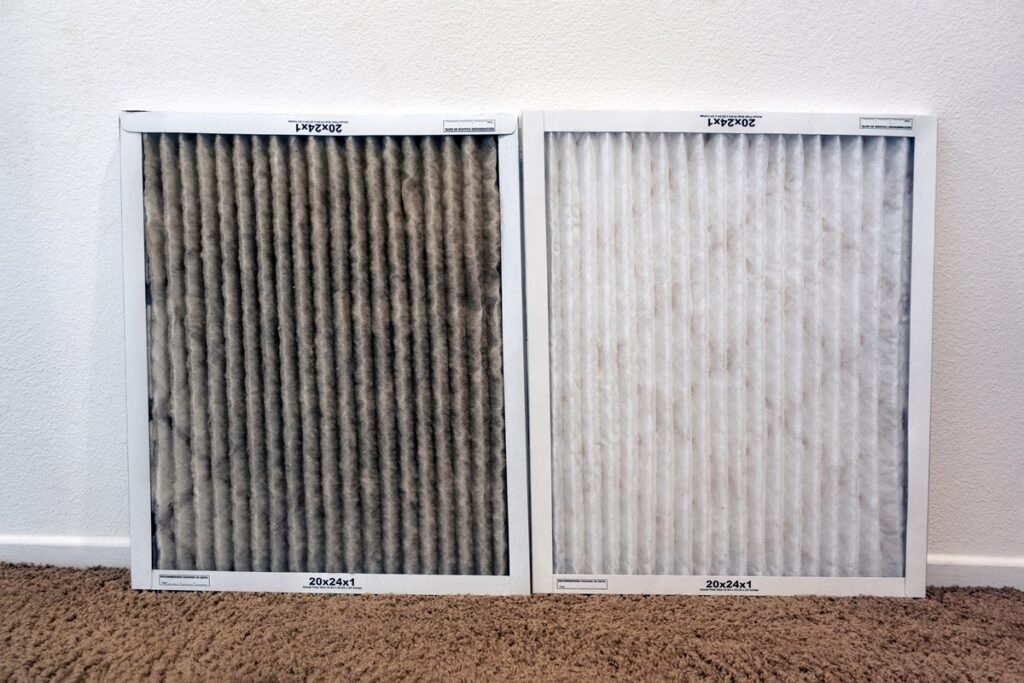
But first, how often should you change your AC filter? Preferably, depending on how often you use the AC unit, this should happen every one to three months. If you use your air conditioner every day, you should change the filter every four to six weeks. However, if you use it less often, you can change the filter every three months or so.
Now, let’s discuss the reasons for cleaning your AC filter:
- As the name suggests, the air filter is responsible for removing airborne particles from the air that passes through the AC unit, improving indoor air quality.
- An unclean air filter is ineffective at improving indoor air quality, resulting in lower-quality air and more suspended dust particles.
- When an air filter is unclean, the air conditioner has to work harder to push air through the system, resulting in higher energy bills.
- A clean AC air filter prevents the buildup of dust within your home’s air ducts.
- Keeping the air filter clean prolongs the life of the AC unit.
Where Is My AC Filter Located?
One of the most common reasons for questions like, “Do air conditioners have filters,” is that people often do not know how to find their filter in their particular AC unit. In the following section, we will take a closer look at the air filter locations in various types of AC units.
- Central Air Systems: In these kinds of large HVAC systems, it is common to find the air filter in the return air vents (which may be in the wall or roof), or near the furnace.
- Window Units: In window AC units, the air filter is generally located behind the unit’s front panel, so you’ll have to open the front panel to get to it.
- Ductless Mini-Splits: In these units, the air filter may be located beneath the top panel or behind the unit’s front panel.
- Portable Units: In a portable AC unit, the air filter is generally located at the back or side of the unit, where it filters the air being drawn into the unit.
| AC Type | Potential Filter Locations | Tips for Finding the Filter |
| Central Air |
|
|
| Ductless Mini Split |
|
|
| Window Unit |
|
|
| Portable Unit |
|
|
How to Change an AC Filter: Step-by-Step Guide
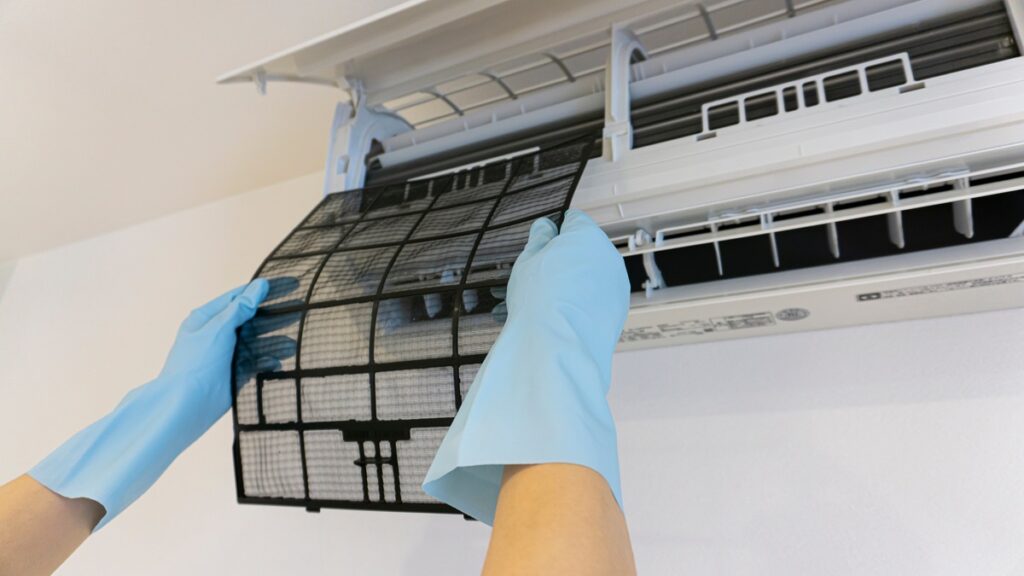
Now that we’ve discussed the basics of why your AC air filter is important and where to find it, let’s discuss how to change an air conditioner filter. Below, we’ll share a step-by-step process:
Step One
Switch off the AC unit, and the breaker feeding power to it, to protect you from potential electrocution and other electrical hazards.
Step Two
Locate the air filter. You can refer to the information given above to help you find the location on your unit. More often than not, the air filter will be behind a grille, duct, or removable panel on the unit or in the walls of your home.
Step Three
The next thing you need to do is determine the correct filter size. This is essential as an undersized filter will be ineffective and an oversized filter will place additional strain on the system. The filter size is generally printed on the side of the filter.
Top tip: If you can’t find the filter size, ask your HVAC technician to show you and write down the size so you can order them yourself next time.
Step Four
Remove the old filter. It’s as simple as sliding it out of its slot in the unit.
Step Five
Check the condition of the unit. If some of the ducts, fans, or other mechanisms are clogged or full of dirt, use a dry, soft cloth or large, soft-bristle paintbrush to remove the dust and debris.
Step Six
Insert the new filter. Again, it simply slips into the appropriate slot. However, pay careful attention to the orientation arrows on the filter. There are arrows on the filter’s frame which need to point away from the air return, toward the air handler.
Step Seven
Turn the AC unit back on.
Step Eight
If the unit has built-in reminders for changing the filters, set them to the next date and time for when the filters need to be replaced.
Step Nine
Test the AC unit to see that it is working properly. If something is wrong, double-check the filter size and orientation.
Step Ten
If the AC isn’t working, contact HVAC repair and maintenance technicians to take a look. If it is working properly, enjoy your clean new AC unit.
How to Choose the Right Filter
Now that we’ve discussed how to install an air filter, let’s talk about which filter is the best for you.
There are various different filter ratings out there, helping you to choose an option that works well for you. The main one is MERV, or Minimum Efficiency Reporting Value, which makes it easier to find a filter that meets your requirements.
The rating system goes from 1 to 16, with higher numbers being more efficient at trapping smaller particles and lower numbers being less efficient.
The tradeoff here is that the more dense the filter is (and therefore better at trapping smaller particles) the worse the airflow is likely to become. Less dense filters offer better airflow but less efficient filtration.
As a general guide, a MERV 8 rating is a good central point for most homes. Above that, the filtration may become more efficient while the airflow may diminish.
HEPA filters are also worth mentioning, though they aren’t a rating system, but a classification. They capture a high percentage of small particles.
|
Filter Type |
Pros |
Cons |
Best For |
|
HEPA |
|
|
|
|
UV |
|
|
|
|
Electrostatic |
|
|
|
|
Washable |
|
|
|
|
Media |
|
|
|
|
Spun Glass |
|
|
|
|
Pleated |
|
|
|
Troubleshooting: Common Issues Related to AC Filters
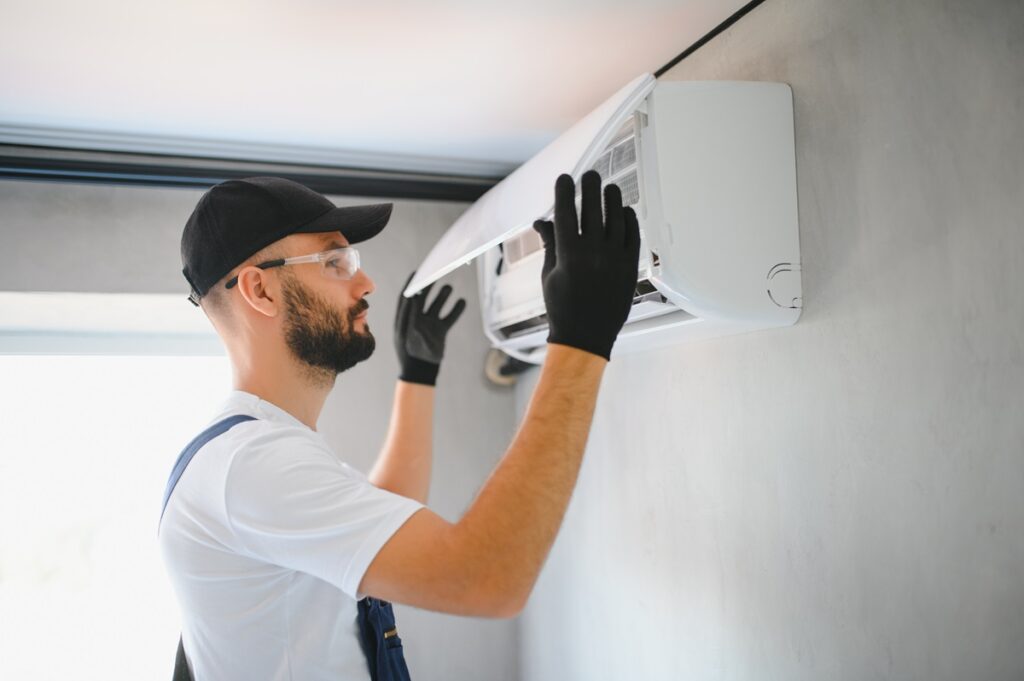
How do I know if my AC filter is dirty?
If your AC filter is dirty, the signs may include bad airflow, dust around the AC vents, lower air quality, higher energy bills, inconsistent cooling, and musty smells emanating from the AC unit. As a good test, you can hang a clean white sheet in front of the air conditioning unit for around ten minutes. If the sheet turns grey, your AC filter is dirty.
What if I can’t find my AC filter?
If you can’t find the AC filter yourself, it’s best to call in a professional HVAC maintenance team to do it for you.
Can I clean and reuse my filter?
Some filters are specially designed to be washable and reusable, and these can be reused. Most, however, are designed to be disposable.
How long can you run an AC without a filter?
Preferably, your AC should never run without a filter for more than 8 hours. Longer periods can lead to AC damage.
Which way should an air filter face?
Each individual air filter should have arrows on the frame. When the filter is installed, the arrows should point away from the air return, toward the air handler.
Preventive Maintenance Tips
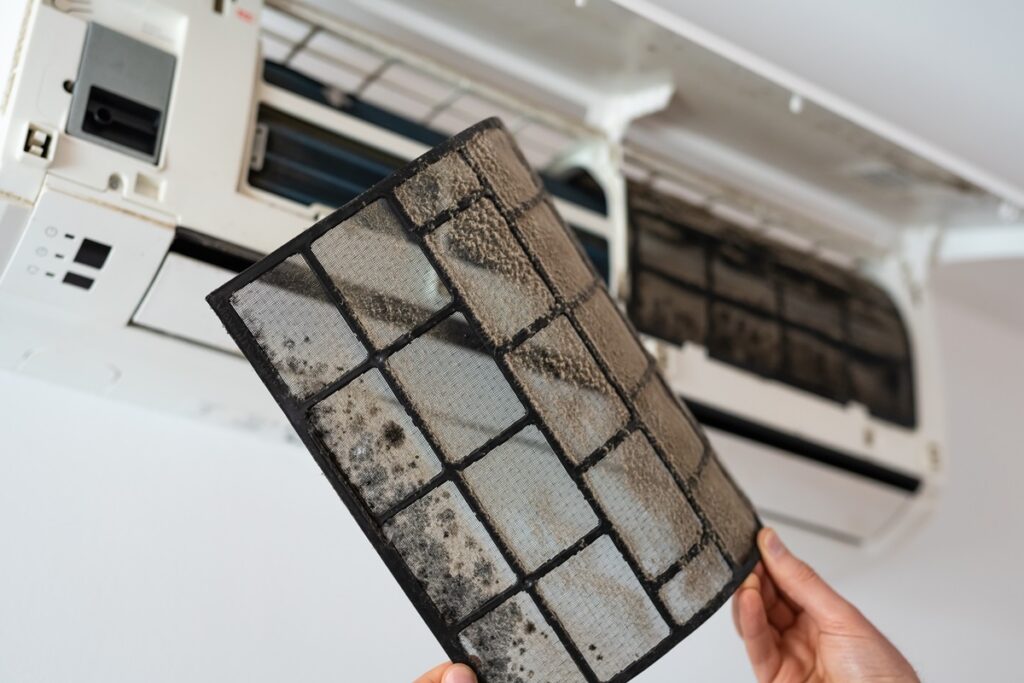
Apart from general information about how to find and clean or replace your AC filter, there is a range of preventative maintenance measures that you can take to help keep your AC unit in top shape. These include the following:
- Set up calendar reminders (or use the alarm on smart devices) to help you remember to check the filter regularly.
- Clean the AC evaporator coils as needed.
- Check the air filter monthly and keep the AC vents clean.
- Ensure that you clean the mold from the system regularly.
- Check regularly to ensure that there’s no clog in your AC drain line.
All of these things, and other forms of AC maintenance, can help to extend the lifespan of your unit.
Environmental Considerations
One of the disadvantages of regular air filter replacement is that it can result in quite a lot of landfill waste. The best thing to do here is to look for a recyclable option or one that will decompose the fastest.
Washable filters are another modern option. They allow you to wash your air filters and reuse them multiple times before throwing them away.
Conclusion
As you can see, keeping your AC’s air filter clean and in good shape is easier than it might seem. It is an essential part of AC maintenance, which should occur regularly. If you can’t find the time (or inclination)to do it yourself, you should definitely consider hiring an AC maintenance team to do it for you.
